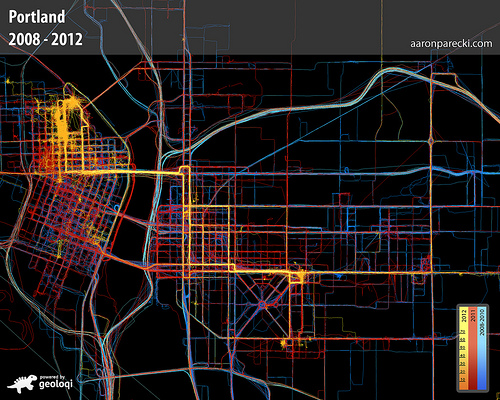Baby-tracking with this teddy

Even as a new global movement – the Quantified Self – is gaining popularity, we see many parents beginning to log their babies’ lives too. Since long before all the self-tracking devices were made available, parents have been photographing or manually documenting their babies’ first cry, first steps, and first words. However, the joys of parenting are often accompanied by waves of anxiousness. As parents, we are often concerned with the health and overall well-being of our little ones. With the recognition of this need, many companies, such as the Owlet baby monitor, have developed a range of self-tracking devices that could measure a baby’s vital signs. To increase the liking towards these “suspicious” foreign articles that are often worn on babies’ bodies, two companies have developed endearing teddy bears that could help monitor a baby’s vital signs as well. In the picture above, we see Tedi, a health-tracker for babies that is equipped with sensors to monitor sound and movement. One other company, Teddy the Guardian, also boasts to be the child-friendly medical solution. Creative ways to reduce the barrier of trial for our little ones, isn’t it?
Read more: Health-tracking teddy bear lets parents monitor baby’s every move and cry
How not to go crazy self-tracking

Nearly half of adults in the UK who self-track with mobile devices say they’ve experienced “strong behavior change”. And besides all the baby-logging devices and apps that we’ve introduced above, the paradox of choice probably exists in the Quantified Self gadget market because there are simply too many to choose from. Before purchasing any of them, one has to be sure of the kind of things he/she wants to track. In this article, the author poignantly points out the dilemma of self-tracking. To him, “At first I loved it, but I quickly became overwhelmed”. If your sentiments are alike, how the author went on to categorize the types of self-tracking gadgets would probably be of some help. He believes that categorizing these trackers into sleep, fitness, diet, driving and life in general will help you effectively use “these awesome gadgets without going crazy”. We, of course, believe he’s missed out on this one for tracking life in general (;
Read more: How to Track Everything in Your Life Without Going Crazy and Fitbit study: UK adults find mobile health tracking, not public messaging, effective
Art in lifelogging

If you’re slightly more geeky (just like us), we believe you’d find the above visualization of data pretty cool. The above is actually GPS data plotted by Aaron Parecki, one of the founders at Geoloqi. This visualization literally shows where he’s been and at what speed. However, transforming data into art is not just done with GPS data. For a project called “Quotidian Record,” media artist Brian House has also turned a year’s worth of his movements into an 11-minute musical track and stamped it on a handsome piece of vinyl. Many others at Flowing Data are also deriving new and creative ways to represent data. We are looking forward to the many creative projects that will flow out of the Narrative Clip too!
Read more: Numbers From Around the Web: Round 7 and QS Gallery: Nick Winter
Wearables are transforming the past
Wearable technology have a close connection with lifelogging. However, they extend beyond the scope of lifelogging and are potentially transforming inventions of the past as well. Traditionally, hearing aids are electroacoustic devices designed to amplify sound for the wearer, usually with the aim of making speech more intelligible, and to correct impaired hearing as measured by audiometry. In the video above, you’d find a new invention called Cynaps Enhance, which is a headgear that helps people hear. Instead of traditional methods, Cynaps Enhance makes use of bone conduction to send audio directly to the inner ear using vibration. This full hearing enhancement system that is built into a baseball cap consists of dual microphones built into the bill to pick up sound and provide location awareness, and then transmits sound from the microphones or a Bluetooth source directly to the inner ear using bone conduction transducers in the cap. Interested to make this invention a reality? Support them at their Indiegogo campaign here.
Read more: From Immersive PC Gaming to Hearing Enhancement: An Interview With Max Virtual CEO Mike Freeman and Data-driven thoughts about the growing wearable computing market
If you enjoyed this post, you can also subscribe to our monthly newsletter! PS – Have you read about our name change, funding and our official shipping date? Read our CEO letter here

